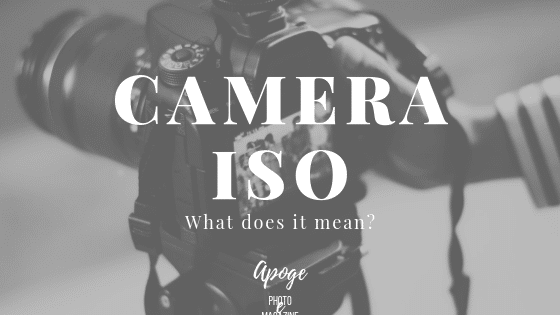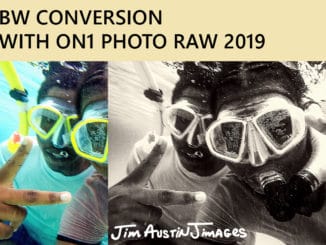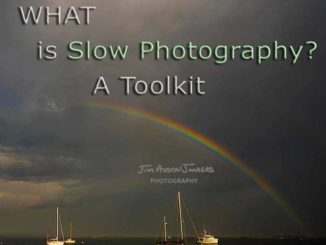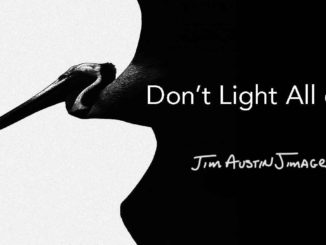
Camera ISO forms part of the “exposure triad”, along with shutter speed and lens aperture. When used together, these three elements allow the photographer to control the brightness of a photo. Of the three though, ISO is often the one that beginner photographers find most confusing.
As you likely already know, shutter speed controls the amount of time that light falls onto a camera’s sensor – that’s pretty straightforward. Meanwhile, aperture dictates how wide the opening letting that light into the camera is. Once again, grasping this doesn’t present any huge intellectual challenge – at least once you’ve got beyond the counterintuitive f/ numbers. But what on earth is ISO?
This short guide to camera ISO will explain everything, in simple terms.
What Does ISO Mean?
The initials ISO stand for the International Organization of Standardization. This organization does not exist purely for photographic matters. Instead, its purpose is to guarantee dependable international standards in all areas of industry and commerce. This way, no matter where in the world you might be, you can be sure that standards of measurement remain consistent.
In the case of photography, ISO was first used to refer to the degree to which photographic film was sensitive to light. A “slow” film, i.e., one rated at ISO 50 or 100, would need a relatively large amount of light in order to produce a correct exposure. Whereas a “fast” film, such as 800 ISO or 3200 ISO, would need much less light to produce an equally bright image.
Before the introduction of ISO standards, many different systems of measuring a film’s light sensitivity were used – such as ASA and DIN, among others. Even today, you may sometimes still see reference to ASA in the context of analog film technologies.
The benefit of ISO standardization is that a photographer purchasing 100 ISO film in one part of the world today can be certain that they can buy an identical product in another part of the world tomorrow, with no variation in performance. This way there’s no need to carry out expensive and time-consuming tests when changing to a different brand of film: you can just put the film in your camera and start shooting as per usual, confident of consistent results.
While relatively few people still use photographic film today, digital cameras also employ the ISO rating in order to measure sensitivity to light: in this case the sensitivity of the camera’s image sensor to the light coming in through the camera lens. This way, if you shoot with the same ISO settings on two different cameras, you can be sure that the results will be the same.
There’s one significant difference between film ISO and digital ISO though. Photographic film has a fixed sensitivity to light (i.e., if you put a roll of 100 ISO film in your camera, you stay using a 100 ISO film until the end of the roll). But the ISO of a digital sensor can be changed by the user between one shot and the next.
Why Change the ISO Setting?
Just as with aperture and shutter speed, the ISO setting you use will help to dictate the brightness of your photo. As you’re likely aware, aperture and shutter speed can be increased or decreased in increments corresponding to “stops” – with a difference of a full stop of light each time a value doubles or halves. For example, a shutter speed of 1/60 lets in twice as much light as 1/125, but 1/125 lets in twice as much as 1/250, etc.
It’s the same with ISO, only here sensitivity to light increases as the numbers rise. So, for example, 200 ISO is twice as light-sensitive as 100 ISO. And by doubling the camera’s sensitivity to light, you effectively double the brightness of the photo.
Ideally, we’d always get to shoot in situations where there is a lot of light. However, this isn’t always the way that things work out in photography. For this reason, it can be useful to be able to adjust the sensitivity of the camera to light when working in low-light situations, such as indoors, or at night.
However, as noted above, ISO is not the only determinant of brightness (i.e., exposure). Along with aperture and shutter speed, ISO forms part of the “exposure triad”: three separate but interdependent methods of controlling the brightness of a photograph.
The three members of the triad are not alternative methods of controlling exposure, though. Instead, they work together in tandem. So if you increase ISO from, say, 100 to 200, then in order to achieve an identical exposure you’ll need to compensate by either shutting down the lens aperture one stop, or by choosing a faster shutter speed.
However, each method also comes with its own collateral effects that will influence the final photograph in other ways beyond merely the brightness of the image. This means that proper use of the triad involves selecting the best combination of the three settings for the particular lighting conditions you are photographing in, and the final effect you desire for the photo.
Why Not Just Use the Fastest ISO Setting?
Every camera model will likely offer a different range of ISO settings. Most cameras come with 100 ISO as the lowest setting (i.e., the least light-sensitive setting). Users refer to this as the camera’s “base ISO”. Then, faster ISOs will also be available, usually going through 200, 400, 800, 1600, and 3200, depending on the model. With more expensive cameras, you’ll likely be able to shoot at ISOs of 6400 and well beyond.
As photographers, we frequently struggle to get enough light to take a shot. Given that a more sensitive ISO allows shooting even when there isn’t much light, why not just select the fastest ISO setting your camera will allow and leave it there?
Well, as useful as fast ISO settings can be, they come at a price. Analog film photographers paid this price in the form of increased grain when using faster films. So, for example, a 100 ISO film would produce photos that were very clean, detailed, and sharp looking. But in contrast, a photo made using 3200 ISO film would be incredibly grainy – indeed so much so that a lot of the finer details of the scene would likely be unrecognizable.
With digital cameras, it’s pretty much the same: only now it’s not grain that we see in photos made at faster ISOs, but digital “noise.” Either way, the result is an image that will not stand up to close inspection or a high degree of enlargement.
Aside from the problem of noise/grain, shooting at a higher ISO will also negatively impact the quality of your photos in other ways too. For example, both color rendering and dynamic range (i.e., the camera’s ability to capture the extremes of shadow and highlight areas) will be much better at low ISOs than at high ones.
All this means that upping your camera’s ISO settings should always be the last option, once you’ve already reached the limit with both shutter speed and aperture. So, for example, if you know that a particular shot really won’t work if you open up the aperture any further, and yet shooting at a slower shutter speed isn’t an option either, clearly the only solution at this point would be to shoot at a higher ISO.
Otherwise, though, you should always aim to shoot at the base ISO, or at least the slowest ISO you can get away with – as this will help to guarantee that your camera is shooting the best quality images it is capable of producing.
Even in dark environments, it will often be possible to continue shooting at a low ISO if you can use a tripod or prop the camera up on some other stable object such as a table or chair. This way you can select a slower shutter speed without the risk of blur caused by camera shake.
However, this will only be an option of the subject is static, as a moving subject will be blurred if the shutter speed is too slow. At this point, a change in ISO setting might be desirable. The question is, how fast an ISO can you get away with before image quality begins to suffer unacceptably?
Unfortunately, there’s no universal answer to this question. Different camera models will perform quite differently at each ISO setting. More expensive cameras – particularly those with full-frame sensors – tend to function much better at high ISO settings than entry-level models.
So while a beginner’s DSLR like the Nikon D3400 can produce admirably sharp images at 100 or 200 ISO, merely move up to 800 ISO, and the camera becomes almost unusable due to the enormous amount of digital noise present in photographs. Shoot at 800 ISO on a top of the range Nikon like the D850, and the results will likely look better than the D3400 can manage even when set at 100 ISO.
For most photographers, there will come the point where increasing ISO speed any further will result in images that are just too grainy to be worth taking at all. However, due to the degree of variation in high ISO performance between different cameras – not to mention the matter of personal taste – we can’t recommend any universal rule as to where this cut off point will be.
The only real solution is to try out your camera (or any camera that you are considering purchasing) at all ISO settings, and on a variety of different subjects, in different lighting conditions. If you can see that going beyond, say, 1600 ISO always results in a file that you find unacceptably grainy, then you know where the limit lies for you with that particular camera.
Bear in mind, though, that images shot at high ISO settings may look great when viewed on your camera’s LCD, but terrible once you get home and look at the image at a higher magnification on your computer. The only reliable way to test the ISO performance of a camera is by looking at the files closely in dedicated photo editing software such as Lightroom or Photoshop.
ISO and the Exposure Triad
Setting photographic exposure is always a kind of compromise. A negotiation. A process of give and take between the three elements of the exposure triad: ISO, aperture, and shutter speed.
There’s never just one single route to correct exposure. Indeed, a correctly exposed image can be achieved in numerous ways, by setting different combinations of these three elements. But while all these combinations may produce a good exposure for the subject, they will alter the photograph in other ways. Which of these combinations I should choose will ultimately depend on the final result I want to achieve with my photograph.
It’s a bit like building a house on a budget. If I build the house entirely from brick and stone, it will cost a lot of money, but will likely last a long time. However, if I go for brick and stone, then I’ll need to save some money elsewhere on the project to stay within budget. Meaning, that I might have to forget about having a swimming pool in the yard, for example, or that I will need to make the garage a lot smaller than I’d initially planned.
Alternatively, if I build the house using a wood frame, composite cladding, and drywall, the initial outlay for materials may be much cheaper than with stone. But the downside is that the house may not last as long before needing to be remodeled. However, if I go this route, perhaps I can also get a pool, a big garage, and put a jacuzzi in the bathroom.
Either way, I get to build a house for the same price. It just won’t be the same house. Which house I consider to be the “best” will depend on what my priorities are.
With photography, we are nearly always forced to work “on a budget.” But instead of being constrained by a financial budget, we must work with the limited amount of light available in any situation that we might want to photograph.
For example, if the light is low, but I know that I absolutely need a fast shutter speed to freeze action, then I’ll have to compensate elsewhere. In such a scenario, I have two possibilities available to me:
– One option is to open up the lens aperture to let in more light. But this will also have the side effect of reducing the depth of field. Depending on the photo I want to produce, I might be OK with this though.
– Alternatively, I can choose a faster ISO setting, which will make the image sensor more sensitive to light. But at the same time, this will also increase noise in the photo. Depending on what I want to do with the photo, I might be more OK with this than with changing the aperture.
Either way, I end up with a correctly exposed photo. Which photo I consider to be the “best” will depend on what my priorities are.
Final Thoughts
Camera ISO is an important element of the exposure triad, offering a third method of controlling the brightness of a photograph beyond just aperture and shutter speed. And, as with aperture and shutter speed, any changes made to ISO settings will also have collateral effects beyond merely lightening or darkening the exposure.
However, whereas increasing or decreasing depth of field, or creating motion blur due to slower shutter speed, are techniques that are often used in photography for artistic effect, few people find the increased digital noise caused by shooting at a higher ISO to be aesthetically pleasing.
Therefore the general rule with camera ISO is that you should only set it as high as you absolutely need to get the shot. Or, to put it another way, keep the ISO as low as you possibly can without it causing too much compromise in terms of aperture and shutter speed settings.
How high you can go with your ISO settings will depend firstly on your camera’s ISO performance, secondly on your subjective idea about what makes a “technically good” photograph, and thirdly on what you intend to do with that photograph (i.e., print it out as a huge enlargement? Or just look at it on your smartphone?).
Keep your camera at its base ISO setting most of the time, only moving to a higher setting when absolutely necessary. And don’t forget to switch back to base ISO once you’re done, or you may find that the next time you use your camera the results are unnecessarily noisy!




Leave a Reply